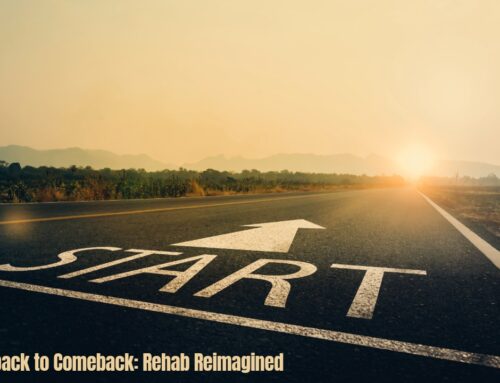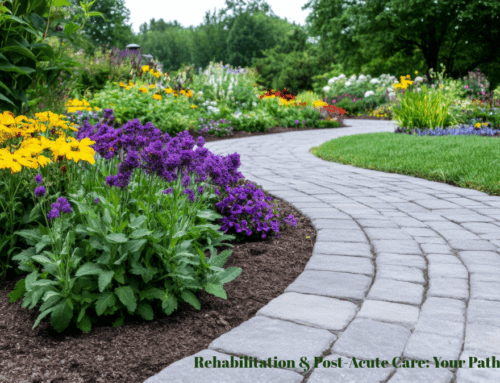After a hospital stay, when the beeps of monitors fade and the sterile scent of recovery lingers, there’s a pivotal moment—a crossroads between fragility and strength. This is where rehabilitation and post-acute care shine, not as mere medical steps, but as the architects of second chances. Picture rebuilding vitality from vulnerability, one purposeful step at a time. Welcome to the journey of revival, where every therapy session becomes a chapter in your personal epic of resilience.
If you’ve watched a loved one confront the challenges of illness or injury, or faced your own battle against the odds, you know the raw truth: healing isn’t linear. It’s a mosaic of setbacks and surges, blended with expert guidance and unwavering support. In this exploration, we’ll uncover the power of these services, from the science of skilled therapies to the heartwarming potential of renewed independence. Buckle up; your path to understanding (and perhaps beginning) this journey starts now.
The Heart of Rehabilitation: Building Bridges to Independence
Rehabilitation is the art of restoration. It’s a thoughtful, compassionate process of reviving function, mobility, and confidence after a life-altering event—be it a stroke, orthopedic surgery, or a chronic condition flare-up. Unlike the acute phase of hospital care, where the focus is on stabilization, rehab shifts to enabling independence. Here, patients aren’t passive; they’re active participants in a tailored blueprint for comeback.
Imagine a physical therapist, armed with cutting-edge techniques, guiding you from wobbly chair stands to confident hallway laps. Occupational therapy goes further, teaching adaptive strategies for daily life—dressing with one hand, cooking with newfound finesse, or mastering fine motor skills for a hobby long paused. Speech therapy, the quiet hero, rebuilds bridges between thought and expression, helping those silenced by neurological events reclaim their voice, literally and figuratively.
What sets premier rehab programs apart is their holistic approach. Services are delivered by multidisciplinary teams, often in partnership with specialized providers like Fusion Rehab Services, ensuring a seamless blend of expertise. The goal? Restoring health and well-being as quickly as possible. This isn’t about rushing; it’s about efficiency driven by evidence-based practices. Short-term rehabilitation, typically spanning weeks to months, targets those transitioning from hospital to home. It’s intensive, goal-oriented care designed to equip you with tools for self-sufficiency, minimizing readmissions and maximizing joy in the everyday.
Rehab isn’t one-size-fits-all. For some, it’s the sprint back to normalcy after a hip replacement. For others, it’s the steady climb from a cardiac event, where monitored exercises rebuild endurance without overtaxing the heart. The beauty lies in the customization—every plan is sculpted to your unique needs, drawing from assessments that consider not just physical metrics, but emotional and social ones too.
Post-Acute Care: The Steady Guardian of Long-Term Wellness
If rehabilitation is the bold architect, post-acute care is the vigilant guardian, extending the scaffolding of recovery into sustained stability. This phase bridges the gap between intensive rehab and full independence, offering a safety net for those requiring ongoing skilled nursing. It’s vital for conditions that demand close oversight, ensuring complications are caught early and progress is nurtured like a fragile seedling.
Picture a suite of services where personalized care plans address the nuances of your health story. Skilled nursing isn’t generic; it’s precision medicine for the post-hospital world. Cardiac rehabilitation, for instance, blends therapeutic exercises with education on lifestyle tweaks—think monitored walks synced with your heartbeat, paired with nutrition counseling to strengthen your ticker. For those with COPD, the focus shifts to pulmonary rehab: breathing techniques that untangle the lungs’ knots, oxygen management that restores breath to its rightful rhythm, and energy-conservation strategies that make daily tasks manageable.
Wound care stands out as another cornerstone, a meticulous process of debridement, dressings, and infection prevention that heals not just skin, but souls scarred by prolonged immobility. IV therapy delivers hydration and medications with precision, while bariatric care supports those facing weight-related challenges with dignity and specialized equipment. These aren’t isolated efforts; they’re threads in a tapestry of thorough support, designed to prevent one issue from spiraling into another.
Long-term skilled care extends this further, becoming a home away from home for those whose recovery stretches beyond the horizon. Here, the focus is on quality of life—promoting independence within a framework of 24/7 supervision. It’s where chronic conditions like diabetes or post-stroke deficits find compassionate management, allowing residents to savor sunsets, share stories, and pursue passions without the shadow of isolation.
Unique Features That Enhance the Experience
What makes exceptional rehab and post-acute care stand out? It’s the intagibles—the amenities that whisper “home” amid healing. Picture sun-drenched therapy gyms with parallel bars and hydrotherapy pools, where water’s buoyancy eases joints into motion. Private suites balance solitude with community, while dining halls buzz with nutritious, chef-crafted meals tailored to therapeutic diets. Recreation programs infuse fun into function: art classes for fine motor rehab, gentle yoga for balance, or music therapy that harmonizes mind and body.
Technology plays a key role too—telehealth for seamless physician consults, electronic health records that ensure no detail is missed, and wearable monitors that track progress in real-time. Yet, it’s the philosophy that shines brightest: a commitment to holistic wellness that embraces spiritual care, family involvement, and transitional support. Admission is simple—a physician’s order, insurance coordination, and a warm welcome that feels like coming home. No red tape, just readiness.
Charting Your Course: Why Now is the Time to Act
As our world ages, with 10,000 Baby Boomers turning 65 daily, the need for robust rehab and post-acute care grows ever more urgent. But amid the numbers, remember this: Recovery isn’t reserved for the young or the lucky. It’s a right, a possibility, a promise waiting to be claimed.
If you’re at this crossroads, whether for yourself or a loved one, the journey awaits—not as a daunting trek, but as an invitation to revive and thrive. Reach out today; let the experts craft your chapter. Because in the grand story of life, every setback is merely a setup for a spectacular return.






